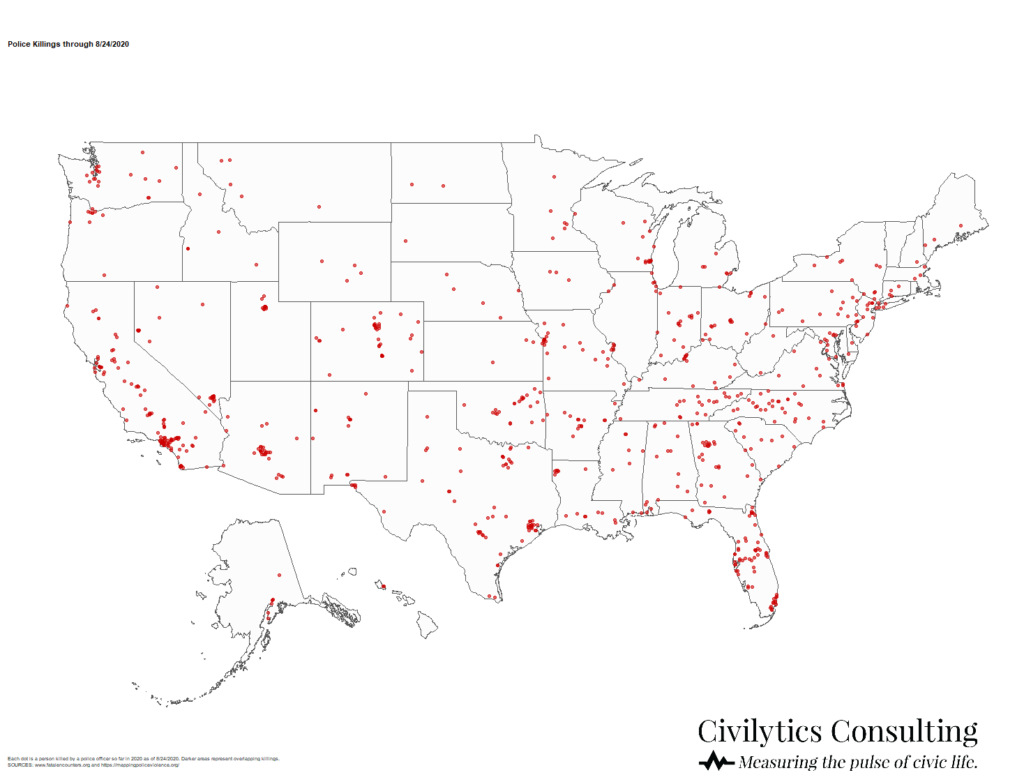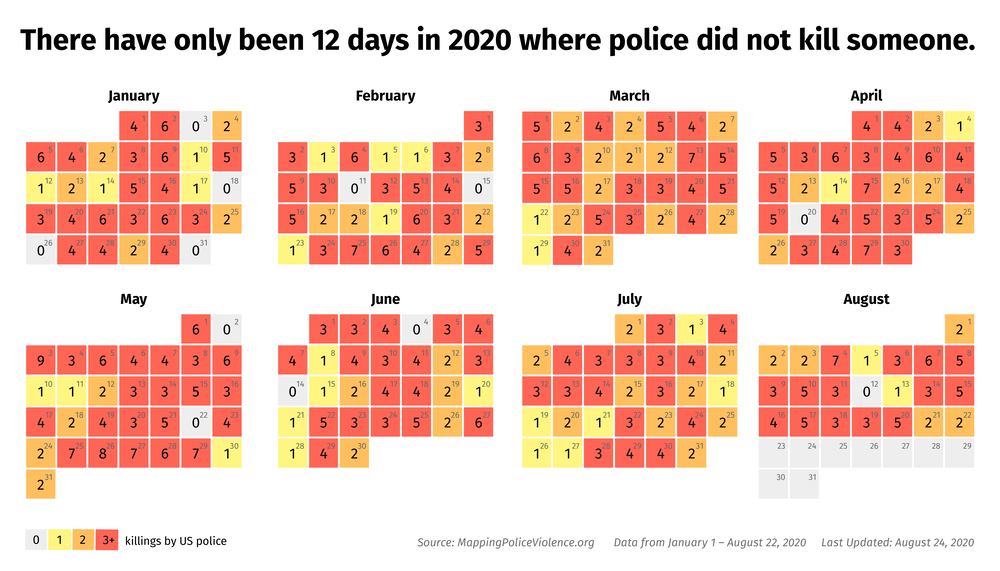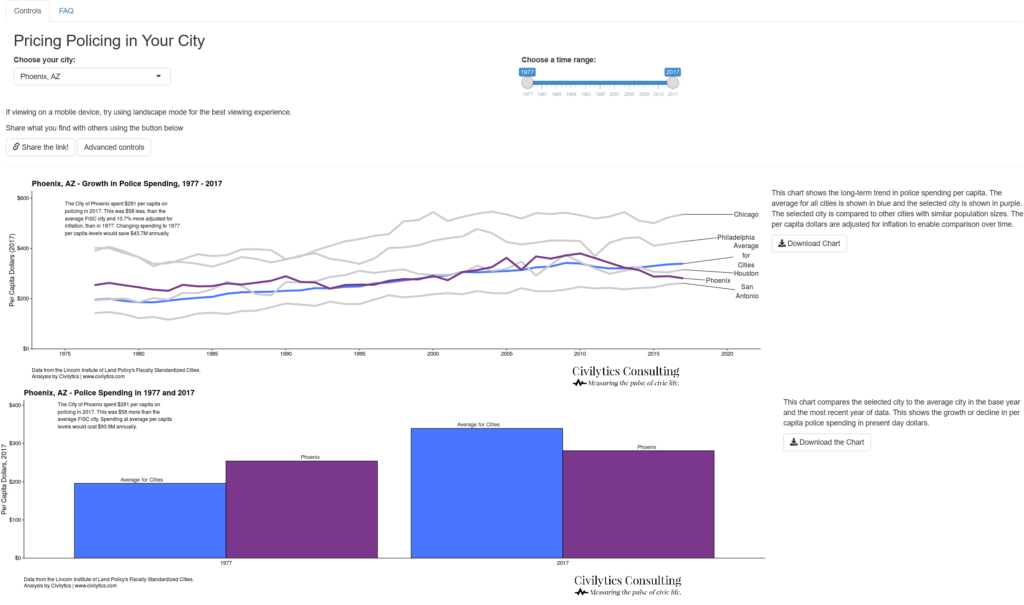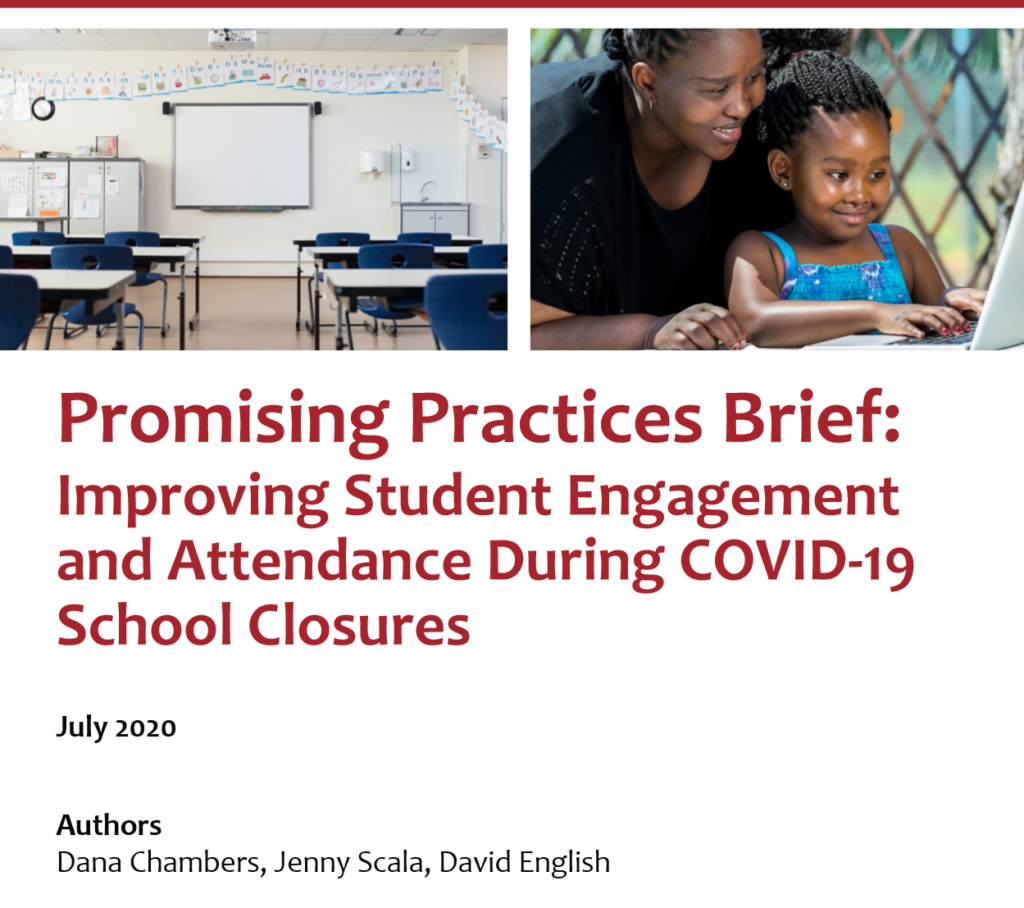
This is a repost of my newsletter, The Civic Pulse, which I am crossposting to the blog. If you like the newsletter, subscribe here: https://civilytics.substack.com/welcome
Friends and Colleagues,
Police violence and our response to it is again in the spotlight after the awful shooting of Jacob Blake in Kenosha, Wisconsin this week. Mr. Blake was doing the hard work of creating a safe community by deescalating a conflict between neighbors. But, then the police arrived, and instead of the situation stabilizing, the police shot and grievously wounded Mr. Blake in the back as he tried to peacefully disengage. Communities across the country have been saying all summer that police are not a solution to end violence, but in fact are perpetrators and invite that violence. The case of Mr. Blake illustrates this fact in heartbreaking clarity.
But what can we do? We can demand our communities give police a limited or non-existent role in serving as first responders and replace them. Policing is a local issue and we can make great change in our community by demanding our town or county changes its approach to public safety. Policing composes anywhere from 25-50% of discretionary city government spending – let’s learn what researchers, grassroots organizers, and progressive city leaders have proposed spending those funds on instead.
In this issue of the Civic Pulse you’ll find:
- Public safety alternatives to policing
- Links to some of the best writing on public safety and policing
- An exciting new tool from Civilytics to help you learn about police spending in your community
- A new resource on best practices for boosting student engagement and attendance in the face of COVID-19
Public Safety Without Police

I’ve been studying the work of people who have spent decades imagining different models of public safety that do not involve police and replace criminalization with care. I’d like to share some of their ideas with you. First, I’d like to share a quote from this excellent piece by Amna A. Akbar in the NY Times last month:
Defunding, part of a strategy to eventually abolish the police, challenges the prevailing logic of police reform: the idea that police brutality is caused by individual bad apples acting without sufficient oversight and training. This idea undergirds the familiar panoply of reforms: body cameras, community policing, implicit bias workshops. If officers are properly equipped and controlled, there will be less violence, its proponents argue — despite no significant evidence to back that up. Defunding … challenges the power, the resources and the enormous scope of the police. Whether they are responding to a mental health emergency or deployed to a protest, their training and tools are geared toward violence.
Ms. Akbar continues, explaining that alternative models of public safety should be grounded in “contact theory” – the only way to reduce police violence is to reduce contact between police officers and the public. Let’s highlight three that I’ve come across repeatedly in conversations with organizations across the country:
- CAHOOTS
- Violence Interruption Programs
- Civilian investigators
CAHOOTS
CAHOOTS stands for Crisis Assistance Helping Out on The Streets and is a mobile crisis intervention team that began two decades ago in Eugene, OR. CAHOOTS diverts up to 20% of 911 emergency calls away from police to paired teams of a trained crisis worker and a medic who respond to non-criminal crises like mental illness problems, substance abuse issues, homelessness, or intoxication.
Much of police work currently is responding to issues around homelessness, mental health, or addiction that would be better resolved by trained professionals. If your community has such a program or is thinking of starting one – lend your help so it can be sustained and thrive.
Violence Interruption
Violence interruption programs focus on mediating conflicts, mediating disputes, and working with victims of violence to prevent retaliation. They treat violence as a public health problem by t identifying high-risk individuals helping them to change their behavior by connecting them to resources like drug treatment, employment, or counseling services to help them leave gangs. These organizations transform communities by changing norms and rebuilding social ties.
Cure Violence is one such program that has been studied and replicated in a variety of contexts and has shown great results. Visit their informative homepage to learn more. Organizations I have worked with in Dallas and Philadelphia have both proposed the Cure Violence as an alternative to their police gun violence taskforces.
Civilian Investigators
This idea comes from Poder in Action, a community advocacy organization in Phoenix, AZ. They noticed that a lot of officer activity is responding to incidents after they have happened – for things like theft or a traffic accident. Often the sole purpose of these calls is to generate a police report for insurance purposes.
Replacing these duties with civilian investigators would reduce police presence in communities, often by a lot! And, by the way, public opinion is rapidly moving in favor of placing traffic enforcement in the hands of civilians as well:
What about the research?
If you are interested in all of the ways we can end violence in communities without involving the police, researcher Anna Harvey has put together this very informative thread recapping most of the best evidence available:
There are also community-created resources to learn more about promoting a new vision of true public safety. I’ll say more about these in my next newsletter:
- This is a one-stop shop that contains many more examples of successful alternative safety programs across the US.
- A resource hub with essays, curricula, audio-visual materials and more that you can use to learn and share with others all of the ways we can work together to end violence.
Budget Tools
I’m proud to announce we just published a new tool that allows you to look up police spending in 150 metro areas across the US.
This tool is for anyone who wants to understand the services their city and community prioritizes spending public dollars on. Use this tool to learn how much your city spends now, and has spent historically, on public services.

What should I ask using this tool?
This tool presents five different looks at spending on public services.
- Your city’s trend in per capita police spending compared to similarly-sized cities
- Your city’s past spending compared directly to its current per capita police spending
- Your city’s per capita spending on 7 categories of public services, including policing
- The long-term trend in per capita spending in 5 categories of public services
- How much your city has spent over the last several decades on policing compared to public health, libraries, and other vital public services
You can export all of the charts as PDFs and also send a link to a specific city and time period to share your results with others! Check it out, along with our ever growing library of budget tools you can use to understand the spending on policing in your community, today.
Engaging Students Virtually During COVID-19

During the past several months, I served as a subject matter expert for the team that wrote this promising practices brief. I can tell you that the authors and other reviewers put a lot of thought and care into finding out what schools are doing about engagement and attendance and what is working during this challenging time. If you are looking to get a quick scan of what other education agencies have been doing to address student engagement in this time – this resource is worth a read. Below is a description from the authors:
The COVID 19 epidemic has led to unprecedented school closures, creating a previously unseen level of activity in the online learning space. This move towards distance learning has created questions about if attendance should still be taken, how to measure attendance during distance learning, and the importance of meaningful remote engagement that leads to learning.
In Promising Practices Brief: Improving Student Engagement and Attendance During COVID-19 School Closures, we share an overview of the research on engagement and attendance in online environments, and the findings from our conversations with five districts across the country about their efforts to support student attendance and engagement.
As always, I’d appreciate your help spreading the word about this newsletter. If you like what you’ve read, consider encouraging others to subscribe.
With gratitude,
Jared

